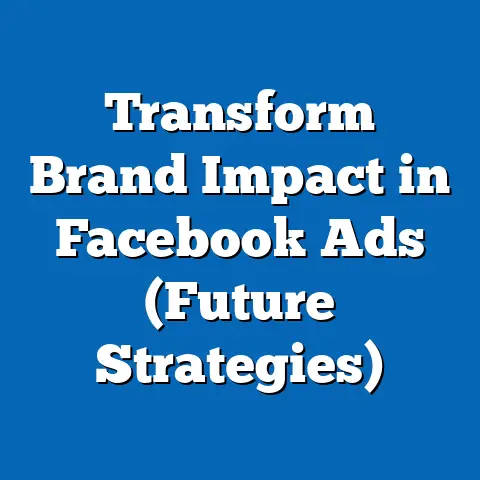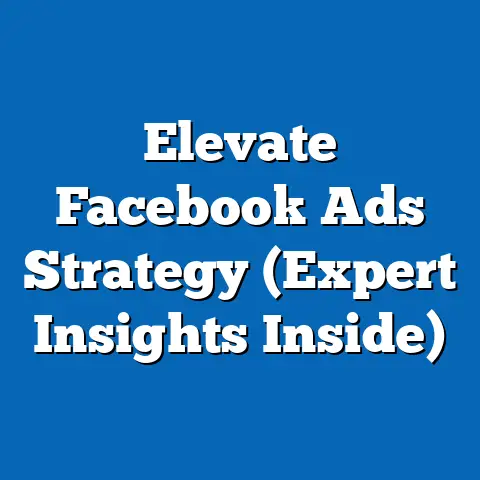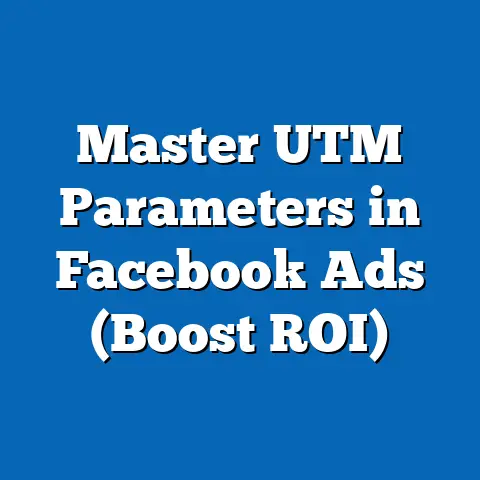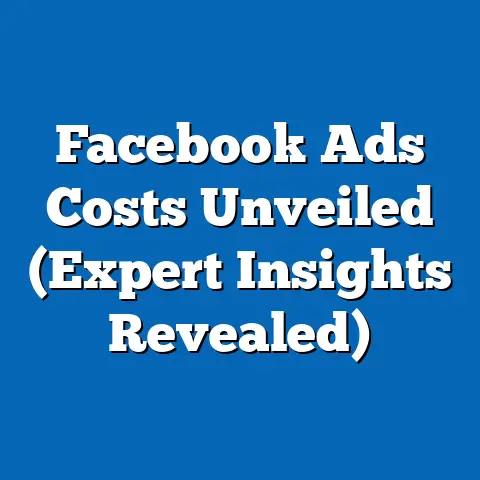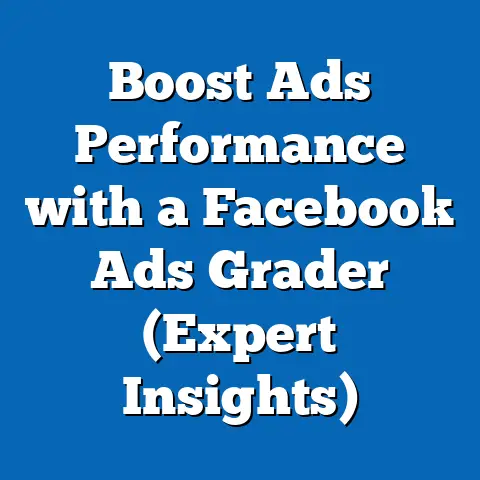Mastering Facebook Ads: Ads vs. Ad Sets (Key Differences Unveiled)
The world of Facebook advertising is a dynamic and ever-evolving landscape. As businesses increasingly rely on digital marketing to expand their reach and connect with potential customers, understanding the nuances of Facebook Ads becomes more crucial than ever. To truly maximize your online presence and achieve tangible results, it’s essential to grasp the fundamental building blocks of a successful campaign. Today, I want to dive into a topic that often causes confusion: the distinction between Ads and Ad Sets. This isn’t just about knowing the terminology; it’s about understanding how these elements work together to deliver your message to the right audience, at the right time, with the right budget.
Let’s get started and demystify the world of Facebook Ads!
Section 1: Breaking Down Facebook Ads
Let’s start with the basics: What exactly is an Ad in the context of Facebook advertising? Simply put, an Ad is the visual and textual content that users see on Facebook and its related platforms (like Instagram). It’s the specific piece of content you’re paying to have displayed to a targeted audience.
Components of a Facebook Ad
A Facebook Ad isn’t just a pretty picture or a catchy phrase. It’s a carefully crafted combination of several key components that work together to capture attention and drive action. These components typically include:
- Visuals: This could be an image, a video, or a GIF. The visual is often the first thing that grabs a user’s attention, so it needs to be high-quality, relevant, and engaging.
- Text: This includes the headline, body text, and any other written copy within the ad. The text should be concise, compelling, and clearly communicate your message.
- Call-to-Action (CTA): This is the button or link that prompts users to take a specific action, such as “Shop Now,” “Learn More,” or “Sign Up.” The CTA should be clear, prominent, and aligned with the ad’s overall goal.
These components are like the ingredients in a recipe. Each one plays a vital role, and the right combination is essential for success.
The Purpose of Facebook Ads
The primary purpose of a Facebook Ad is to achieve a specific marketing objective. This could be anything from generating brand awareness to driving sales. Some common goals include:
- Engagement: Encouraging users to like, comment, share, or react to your content.
- Traffic: Driving users to your website or landing page.
- Lead Generation: Collecting contact information from potential customers.
- Conversions: Encouraging users to make a purchase, sign up for a service, or take another desired action.
I’ve found that defining your objective clearly before creating your ad is crucial. It helps you focus your message, choose the right ad format, and measure your results effectively.
Different Ad Formats on Facebook
Facebook offers a variety of ad formats to suit different objectives and creative styles. Here are a few of the most popular:
- Image Ads: These are simple ads that feature a single image and accompanying text. They’re great for showcasing products, promoting events, or building brand awareness.
- Video Ads: These ads use video to capture attention and tell a story. They’re ideal for demonstrating products, sharing testimonials, or creating emotional connections.
- Carousel Ads: These ads allow you to display multiple images or videos in a scrollable carousel format. They’re perfect for showcasing a range of products or highlighting different features of a single product.
- Collection Ads: These ads are designed for e-commerce businesses and allow users to browse and purchase products directly from the ad.
- Lead Ads: These ads make it easy for users to submit their contact information without leaving Facebook. They’re great for generating leads for sales teams or building email lists.
Each ad format has its own strengths and weaknesses. The best format for you will depend on your objective, your target audience, and your creative assets. I always recommend testing different formats to see what performs best for your specific needs.
The Importance of Creative Elements and Audience Targeting
The success of a Facebook Ad hinges on two key factors: compelling creative elements and effective audience targeting.
- Creative Elements: Your visuals and text need to be attention-grabbing, relevant, and persuasive. They should clearly communicate your message and resonate with your target audience.
- Audience Targeting: You need to ensure that your ad is being shown to the right people. Facebook offers a wide range of targeting options based on demographics, interests, behaviors, and more.
I’ve seen countless ads with great visuals and compelling copy that fail to perform because they’re being shown to the wrong audience. Similarly, I’ve seen ads with mediocre creative that perform well because they’re perfectly targeted. The key is to strike a balance between the two.
Key Takeaway: A Facebook Ad is the specific piece of content that users see. It consists of visuals, text, and a call-to-action, and its purpose is to achieve a specific marketing objective. Compelling creative and effective audience targeting are essential for success.
Section 2: Understanding Ad Sets
Now that we’ve covered Ads, let’s move on to Ad Sets. An Ad Set is essentially the container that holds one or more Ads. It’s where you define the parameters for your campaign, such as audience targeting, budget, schedule, and placement. Think of it as the engine that powers your Ads and determines who sees them and when.
The Role of Ad Sets in Facebook Ads Structure
Ad Sets play a critical role in the overall structure of Facebook Ads. They sit between the Campaign level and the Ad level, providing a layer of control and optimization.
- Campaign Level: This is where you define your overall marketing objective, such as “Awareness,” “Traffic,” or “Conversions.”
- Ad Set Level: This is where you define your target audience, budget, schedule, and placement.
- Ad Level: This is where you create the actual Ads that will be shown to your target audience.
I like to think of it as a hierarchical structure: The Campaign sets the overall goal, the Ad Set defines the parameters, and the Ad delivers the message.
Key Components of an Ad Set
An Ad Set consists of several key components, each of which plays a vital role in determining the success of your campaign. These components include:
- Audience Targeting: This is where you define who you want to see your ads. Facebook offers a wide range of targeting options based on demographics, interests, behaviors, and more. You can also create custom audiences based on your existing customer data or website visitors.
- Budget: This is where you set your daily or lifetime budget for the Ad Set. Your budget determines how much you’re willing to spend to reach your target audience.
- Schedule: This is where you define the start and end dates for your Ad Set. You can also choose to run your ads continuously.
- Placement: This is where you choose where you want your ads to be shown. Facebook offers a variety of placements, including Facebook News Feed, Instagram Feed, Audience Network, and Messenger.
These components give you a high degree of control over your campaign. By carefully defining each one, you can ensure that your ads are being shown to the right people, at the right time, and in the right place.
How Ad Sets Differ from Individual Ad Components
The key difference between Ad Sets and individual Ad components is that Ad Sets define who sees your ads, when they see them, and where they see them, while Ads define what they see.
- Ad Sets: Focus on targeting, budget, schedule, and placement.
- Ads: Focus on visuals, text, and call-to-action.
I’ve seen many advertisers make the mistake of focusing solely on creating great Ads without paying enough attention to their Ad Sets. This can lead to wasted ad spend and poor results. It’s essential to understand that the Ad Set is just as important as the Ad itself.
Scenarios for Adjusting Ad Sets to Optimize Performance
Ad Sets offer a great deal of flexibility for optimizing campaign performance. Here are a few scenarios where you might want to adjust your Ad Set:
- Poor Performance: If your Ads aren’t performing well, you might want to adjust your audience targeting, budget, or placement.
- Audience Saturation: If you’re reaching the same people too often, you might want to expand your audience targeting or try a different placement.
- Budget Optimization: If you’re not spending your entire budget, you might want to increase your budget or try a different bidding strategy.
- Schedule Adjustment: If you’re seeing better performance at certain times of day, you might want to adjust your schedule to focus on those times.
I always recommend monitoring your campaign performance closely and making adjustments to your Ad Sets as needed. A/B testing different targeting options, budgets, and placements can help you identify what works best for your specific needs.
Key Takeaway: An Ad Set is the container that holds one or more Ads. It defines the parameters for your campaign, such as audience targeting, budget, schedule, and placement. Ad Sets provide a layer of control and optimization between the Campaign level and the Ad level.
Section 3: Key Differences Between Ads and Ad Sets
Now that we’ve defined Ads and Ad Sets individually, let’s take a closer look at the key differences between them. Understanding these differences is crucial for creating effective Facebook advertising campaigns.
| Feature | Ad | Ad Set |
|---|---|---|
| Purpose | To deliver a specific message to a targeted audience and encourage a specific action. | To define the parameters for your campaign, such as audience targeting, budget, schedule, and placement. |
| Components | Visuals (image, video, GIF), text (headline, body text), call-to-action (CTA). | Audience targeting, budget (daily or lifetime), schedule (start and end dates), placement (Facebook News Feed, Instagram Feed, Audience Network, Messenger). |
| Audience Targeting | The ad itself doesn’t directly control audience targeting. It relies on the targeting defined at the Ad Set level. | This is where you define your target audience based on demographics, interests, behaviors, and more. You can also create custom audiences based on your existing customer data or website visitors. |
| Budget Management | The ad itself doesn’t have a budget. It operates within the budget defined at the Ad Set level. | This is where you set your daily or lifetime budget for the Ad Set. Your budget determines how much you’re willing to spend to reach your target audience. |
| Performance Tracking | Performance metrics for individual ads (e.g., clicks, impressions, conversions) are tracked separately but are influenced by the Ad Set’s targeting and budget. | Performance metrics are tracked at the Ad Set level to evaluate the effectiveness of the targeting, budget, and placement. This data helps you optimize your campaign and make informed decisions about how to allocate your resources. |
| Feature | Ad | Ad Set |
|---|---|---|
| Purpose | To deliver a specific message to a targeted audience and encourage a specific action. | To define the parameters for your campaign, such as audience targeting, budget, schedule, and placement. |
| Components | Visuals (image, video, GIF), text (headline, body text), call-to-action (CTA). | Audience targeting, budget (daily or lifetime), schedule (start and end dates), placement (Facebook News Feed, Instagram Feed, Audience Network, Messenger). |
| Audience Targeting | The ad itself doesn’t directly control audience targeting. It relies on the targeting defined at the Ad Set level. | This is where you define your target audience based on demographics, interests, behaviors, and more. You can also create custom audiences based on your existing customer data or website visitors. |
| Budget Management | The ad itself doesn’t have a budget. It operates within the budget defined at the Ad Set level. | This is where you set your daily or lifetime budget for the Ad Set. Your budget determines how much you’re willing to spend to reach your target audience. |
| Performance Tracking | Performance metrics for individual ads (e.g., clicks, impressions, conversions) are tracked separately but are influenced by the Ad Set’s targeting and budget. | Performance metrics are tracked at the Ad Set level to evaluate the effectiveness of the targeting, budget, and placement. This data helps you optimize your campaign and make informed decisions about how to allocate your resources. |
Elaborating on Common Misconceptions
One common misconception is that Ads are the most important part of a Facebook advertising campaign. While it’s true that compelling creative is essential, it’s equally important to have a well-defined Ad Set that targets the right audience and allocates your budget effectively.
Another misconception is that you can’t test different audiences within a single campaign. In reality, you can create multiple Ad Sets within a single campaign, each targeting a different audience. This allows you to compare the performance of different audiences and identify which ones are most responsive to your ads.
Real-World Examples and Case Studies
To illustrate how understanding the differences between Ads and Ad Sets can lead to better campaign outcomes, let’s look at a few real-world examples:
-
Example 1: E-commerce Business
An e-commerce business selling handmade jewelry wants to run a Facebook advertising campaign to drive sales. They create a campaign with the objective of “Conversions” and then create two Ad Sets:
- Ad Set 1: Targets women aged 25-45 who are interested in fashion and jewelry.
- Ad Set 2: Targets women aged 45-65 who are interested in fashion and jewelry.
Within each Ad Set, they create several different Ads featuring different pieces of jewelry. By tracking the performance of each Ad Set, they can identify which age group is most responsive to their ads and allocate more of their budget to that Ad Set.
-
Example 2: Local Restaurant
A local restaurant wants to run a Facebook advertising campaign to promote their lunch specials. They create a campaign with the objective of “Traffic” and then create two Ad Sets:
- Ad Set 1: Targets people within a 5-mile radius of the restaurant who are interested in dining out.
- Ad Set 2: Targets people within a 10-mile radius of the restaurant who are interested in dining out.
Within each Ad Set, they create several different Ads featuring photos of their lunch specials. By tracking the performance of each Ad Set, they can identify which radius is most effective at driving traffic to their restaurant and adjust their targeting accordingly.
Example 1: E-commerce Business
An e-commerce business selling handmade jewelry wants to run a Facebook advertising campaign to drive sales. They create a campaign with the objective of “Conversions” and then create two Ad Sets:
- Ad Set 1: Targets women aged 25-45 who are interested in fashion and jewelry.
- Ad Set 2: Targets women aged 45-65 who are interested in fashion and jewelry.
Within each Ad Set, they create several different Ads featuring different pieces of jewelry. By tracking the performance of each Ad Set, they can identify which age group is most responsive to their ads and allocate more of their budget to that Ad Set.
Example 2: Local Restaurant
A local restaurant wants to run a Facebook advertising campaign to promote their lunch specials. They create a campaign with the objective of “Traffic” and then create two Ad Sets:
- Ad Set 1: Targets people within a 5-mile radius of the restaurant who are interested in dining out.
- Ad Set 2: Targets people within a 10-mile radius of the restaurant who are interested in dining out.
Within each Ad Set, they create several different Ads featuring photos of their lunch specials. By tracking the performance of each Ad Set, they can identify which radius is most effective at driving traffic to their restaurant and adjust their targeting accordingly.
These examples demonstrate how understanding the differences between Ads and Ad Sets can help you optimize your campaigns and achieve better results.
Key Takeaway: The key differences between Ads and Ad Sets lie in their purpose, components, audience targeting, budget management, and performance tracking. Understanding these differences is crucial for creating effective Facebook advertising campaigns.
Section 4: Practical Implications for Advertisers
Now that we have a solid understanding of the differences between Ads and Ad Sets, let’s explore the practical implications for advertisers. How can a clear understanding of these concepts influence your overall campaign strategy?
Structuring Campaigns Effectively
The relationship between Ads and Ad Sets is fundamental to structuring effective Facebook advertising campaigns. Here’s a framework I’ve found useful:
- Define Your Objective: Start by clearly defining your overall marketing objective. What do you want to achieve with your campaign? (e.g., brand awareness, website traffic, lead generation, sales)
- Create Your Campaign: Create a new campaign in Facebook Ads Manager and select your objective.
- Define Your Target Audiences: Identify the different target audiences you want to reach. Consider factors such as demographics, interests, behaviors, and location.
- Create Your Ad Sets: Create a separate Ad Set for each target audience. This allows you to tailor your targeting, budget, and schedule to each audience.
- Create Your Ads: Within each Ad Set, create several different Ads featuring different visuals, text, and calls-to-action. This allows you to test different creative approaches and identify what resonates best with your target audience.
This structure allows you to test different audiences and creative approaches within a single campaign, making it easier to optimize your results.
Testing Different Ads Within an Ad Set
One of the most important benefits of using Ad Sets is the ability to test different Ads within a targeted audience. This allows you to identify which visuals, text, and calls-to-action are most effective at driving engagement and conversions.
Here are a few tips for testing different Ads within an Ad Set:
- Create Multiple Ads: Create at least 2-3 different Ads within each Ad Set.
- Vary Your Visuals: Use different images, videos, or GIFs to see which ones capture the most attention.
- Experiment with Text: Try different headlines, body text, and calls-to-action to see which ones resonate best with your target audience.
- Track Your Results: Monitor the performance of each Ad closely and track metrics such as clicks, impressions, conversions, and cost per result.
- Optimize Your Campaign: Based on your results, pause or remove the Ads that aren’t performing well and allocate more of your budget to the Ads that are performing best.
Testing different Ads within an Ad Set is an ongoing process. I recommend continuously experimenting with new creative approaches to keep your campaigns fresh and engaging.
Analyzing Performance Metrics Specific to Ads and Ad Sets
To effectively optimize your Facebook advertising campaigns, it’s essential to analyze performance metrics specific to both Ads and Ad Sets.
- Ad Metrics: Focus on metrics such as clicks, impressions, click-through rate (CTR), cost per click (CPC), and conversions. These metrics will help you evaluate the effectiveness of your creative elements and identify which Ads are driving the most results.
- Ad Set Metrics: Focus on metrics such as reach, frequency, cost per thousand impressions (CPM), and cost per result. These metrics will help you evaluate the effectiveness of your targeting, budget, and placement.
By analyzing these metrics, you can gain valuable insights into what’s working and what’s not. This will help you make informed decisions about how to optimize your campaigns and achieve better results.
Key Takeaway: A clear understanding of Ads vs. Ad Sets can influence your overall campaign strategy by allowing you to structure campaigns effectively, test different Ads within an Ad Set, and analyze performance metrics specific to each level.
To recap, a Facebook Ad is the specific piece of content that users see, consisting of visuals, text, and a call-to-action. An Ad Set, on the other hand, is the container that holds one or more Ads and defines the parameters for your campaign, such as audience targeting, budget, schedule, and placement.
Mastering these concepts is essential for any marketer looking to leverage Facebook’s advertising platform effectively. By understanding the relationship between Ads and Ad Sets, you can structure campaigns more effectively, test different creative approaches, and optimize your results.
Don’t underestimate the power of this knowledge. It can truly transform your Facebook advertising efforts and help you achieve your marketing goals.
Call to Action
Now that you have a solid understanding of the differences between Ads and Ad Sets, I encourage you to explore Facebook Ads Manager and experiment with creating your own campaigns. Try creating multiple Ad Sets within a single campaign, each targeting a different audience. Test different Ads within each Ad Set and track your results closely.
Also, remember that the world of Facebook advertising is constantly evolving. Stay up-to-date with the latest industry trends and updates to ensure that you’re always using the most effective strategies.
By putting your knowledge into practice and staying informed, you can unlock the full potential of Facebook’s advertising platform and achieve remarkable results. Good luck!

